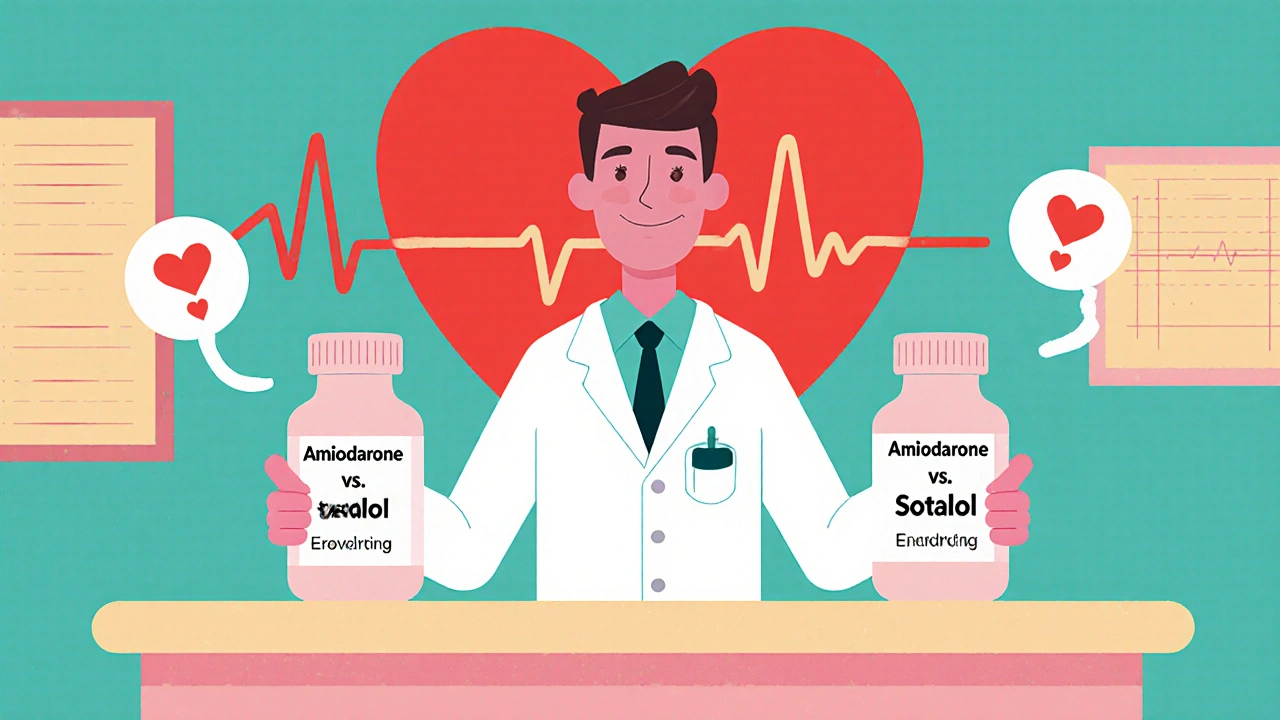Antiarrhythmic Drugs: What They Are and Why They Matter
When dealing with irregular heartbeats, antiarrhythmic drugs, medications designed to restore normal cardiac rhythm and prevent dangerous arrhythmias. Also known as antiarrhythmics, they are a cornerstone of cardiac care. One of the first sub‑groups you’ll hear about is class I antiarrhythmic, sodium‑channel blockers that slow the rapid upstroke of the cardiac action potential, which sets the stage for how the rest of the class system works.
How the Drug Classes Fit Together
The classification system is more than a naming game; it tells you about the drug’s target, its effect on the heart, and potential side effects. Beta‑blockers, class II agents that blunt sympathetic stimulation by blocking β‑adrenergic receptors lower heart rate and reduce the risk of sudden spikes in rhythm. Meanwhile, potassium channel blockers, class III drugs that prolong repolarization and increase the refractory period are prized for keeping atrial fibrillation in check. Class IV calcium‑channel blockers work by slowing conduction through the AV node, making them useful for certain supraventricular arrhythmias. Each class brings a distinct mechanism, so choosing the right agent means matching the drug’s action to the patient’s specific rhythm problem.
Understanding these mechanisms creates a clear semantic triple: antiarrhythmic drugs require precise classification; classification determines therapeutic effect; therapeutic effect influences safety monitoring. For example, a class I drug may cause a QRS widening on the ECG, prompting clinicians to watch for pro‑arrhythmic signs. In contrast, class III agents can lengthen the QT interval, so regular ECG checks become essential. These relationships help doctors balance efficacy with risk.
Beyond classification, practical concerns shape how these meds are used. Dosage titration often starts low and climbs as the patient tolerates the drug, especially with class I and III agents that have narrow therapeutic windows. Drug interactions are a big deal: many antiarrhythmics are metabolized by CYP450 enzymes, so co‑prescribing with certain antibiotics or antifungals can raise blood levels and trigger toxicity. Renal and hepatic function also guide dose adjustments—kidney‑clearing drugs like amiodarone need special attention in patients with reduced clearance. Patient education matters, too; knowing when to report palpitations, dizziness, or visual changes can catch problems early.
Newer therapies are expanding the toolbox. Agents like dronedarone aim to keep the rhythm‑stabilizing benefits of class III drugs while reducing side‑effects linked to older molecules. Gene‑based risk scores are beginning to predict who might respond best to specific antiarrhythmic classes, hinting at a future where treatment is personalized rather than one‑size‑fits‑all. As research uncovers more about ion‑channel genetics, the link between drug class and genetic makeup will become a key factor in decision‑making.
All of this sets the stage for the collection of articles you’ll find below. Whether you’re looking for a quick comparison of common antiarrhythmic agents, safety guidelines for specific patient groups, or the latest insights on emerging drugs, the posts ahead cover the breadth of information you need to make informed choices about heart rhythm management.

Amiodarone vs Sotalol: Which Antiarrhythmic Wins for Arrhythmia Treatment?
Compare amiodarone and sotalol for arrhythmia treatment: mechanisms, dosing, side‑effects, monitoring, costs, and how to choose the right drug.